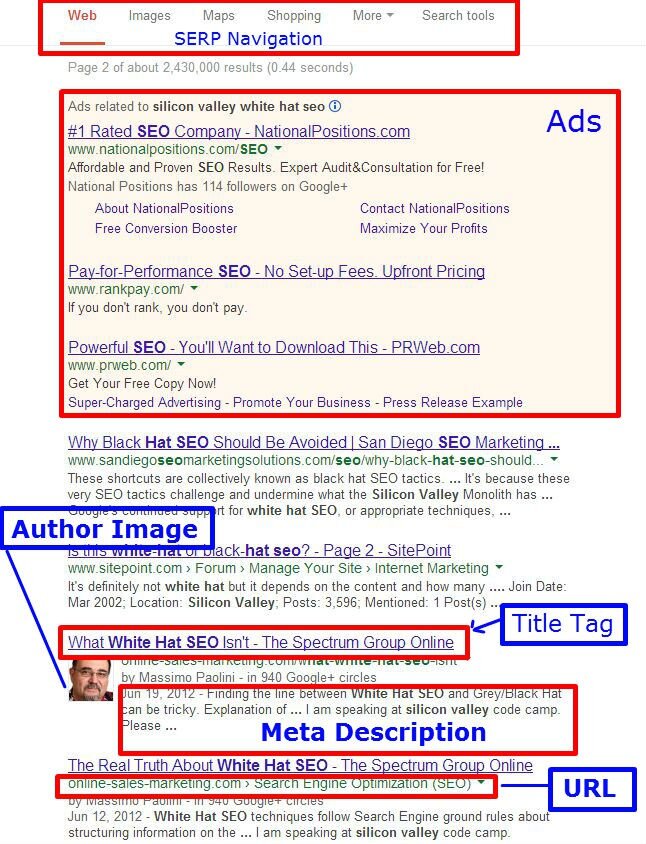Updated March 1, 2025
Reading Time: 3 minutes
The Affects of Google Authorship & Hummingbird
If Search Engine Results Page (SERP) results are on your SEO radar, you’ve probably noticed some changes. If not, we’ll explain how Google Authorship and algorithmic updates like Hummingbird are affecting the SERP page layout. If this sounds like geekery to you, it actually isn’t. If your business is publishing new content to gain SEO visibility, this post explains why you should pay close attention to how your meta data is displayed on SERP results.
The New Anatomy of SERP Results
There are six main areas to a SERP:
1. SERP Navigation – the default is “Web.” SERP results can be further narrowed down to:
• Images – Related to your search results. Warning: if looking for images to use on your website, they are not sorted by creative commons licensing.
• Maps – Pretty self-explanatory. You can also connect to Google Earth.
• Shopping – Lists products associated with a search query
• More – Where you can search for videos, news, books, blogs, recipes, applications, etc…
• Search Tools – Additional search criteria (e.g., color or type of image) to your query
2. Ads – reserved for the very top of the page (with a light beige background) and the right side. This is where your Google AdWords ad is placed.
3. Title Tag – Also known as a SEO Title (if you’re using WordPress SEO by Yoast). It’s limited to 70 characters.
4. Meta Description – the blurb written for a human to entice a click. It sets up an expectation of what a visitor will receive if they click on your link. Google limits this area to 156 characters.
5. URL – Uniform Resource Locator, is a formatted address. This is the actual location of where a visitor will go if they click on your Title (SEO) Title.
6. Authorship Image – the newest piece to SERP results. It links the author (via their Google+ profile) to content. Google reserves this for sites that have gained authority and provide visitors with a positive experience (e.g. don’t bounce, read multiple pages).
Other Subtle Changes
This summer Google made a stealth algorithm change. We dubbed it “Unnamed” as there was precious little written about it. Unnamed affected SERP results in several ways, including:
- SERP Counts. Reduced some results to less than 10 organic listings. This is an sign that some domains were booted out. Perhaps they were eliminated from SERP results for not following quality guidelines? We hope so!
- Increased Domain Diversity. This means more domains were represented. Remember when you searched for something and the same big box store dominated the first page of SERP results? This algo change is good for smaller businesses who are creating quality content.
A word of caution about closely monitoring SERP results: rankings are one piece of the puzzle. Yes, you want your website to be visible to attract visitors. However, if a person clicks your link (Title/SEO Tag) and then bounces, it’s a wasted opportunity. Check Google Analytics for your bounce ratio. If it’s high then rethink your meta descriptions and content optimization.
Have you implemented Authorship? Have you noticed any change to your SERP results?


 Rich Snippets Reduction Change
Rich Snippets Reduction Change
Thanks for sharing it did help me to figure out something where i was stuck